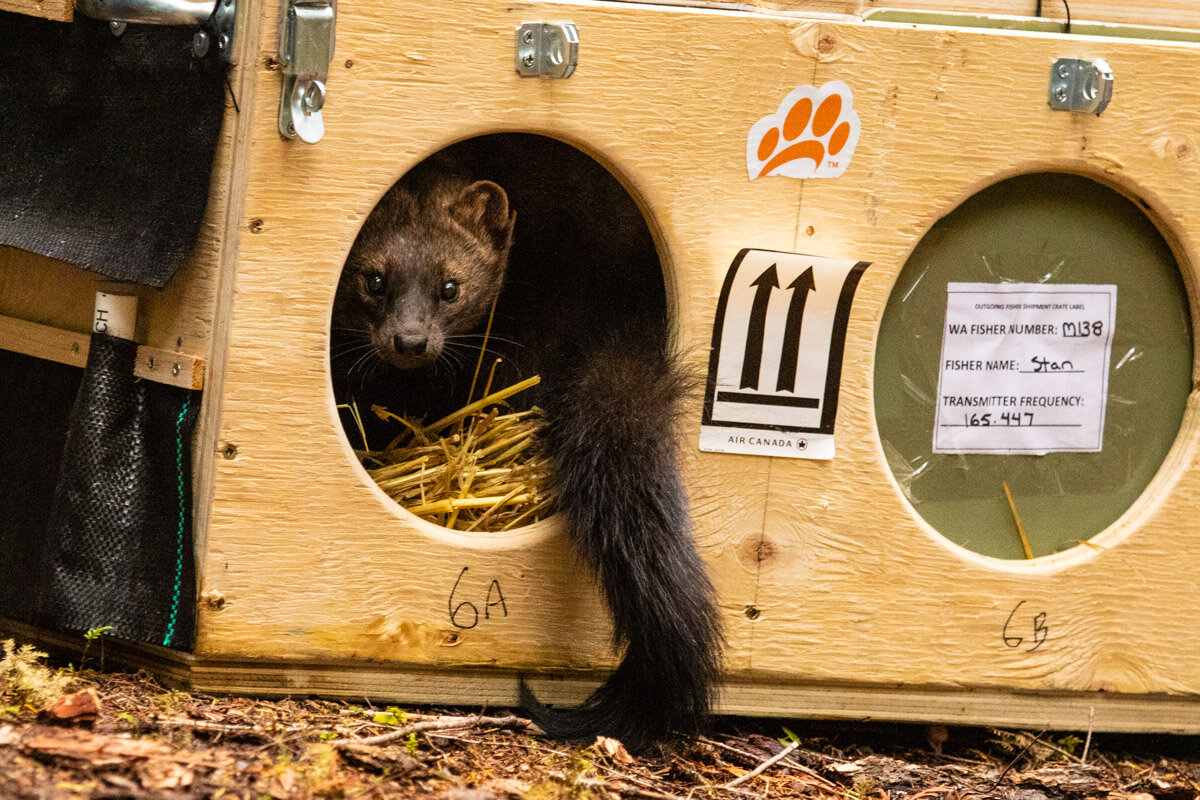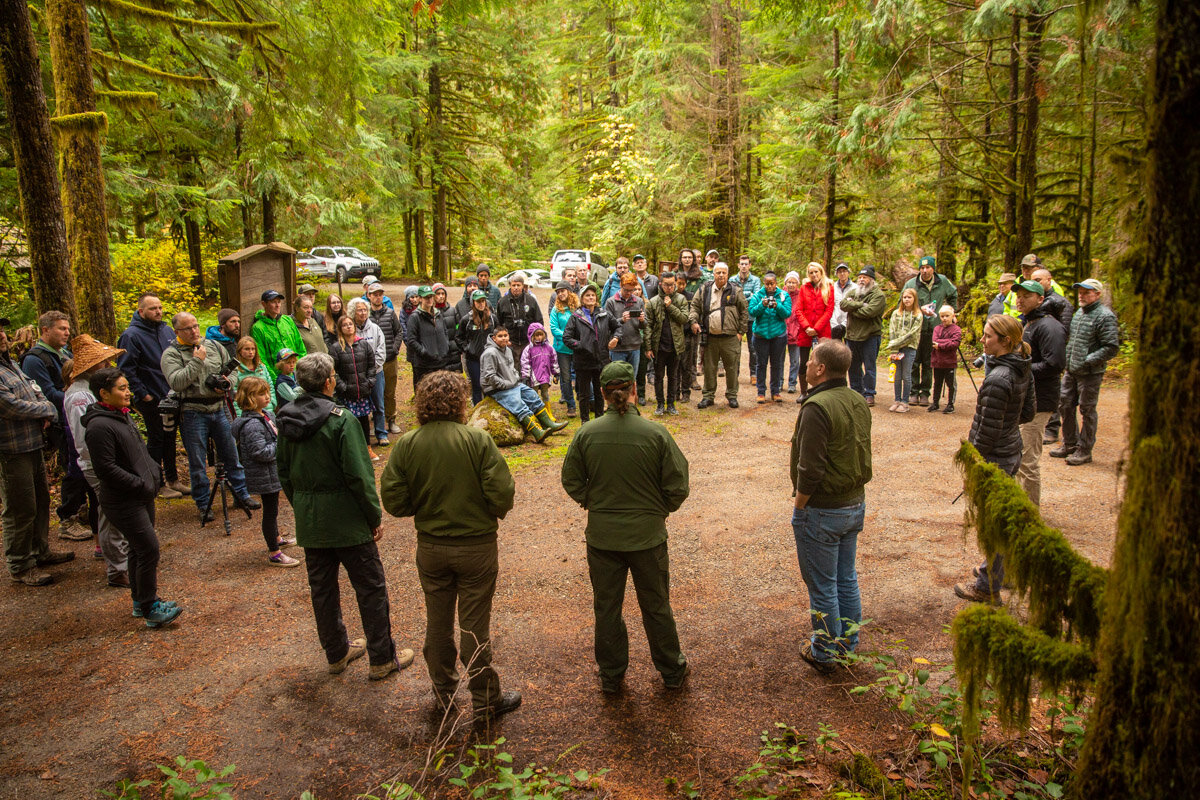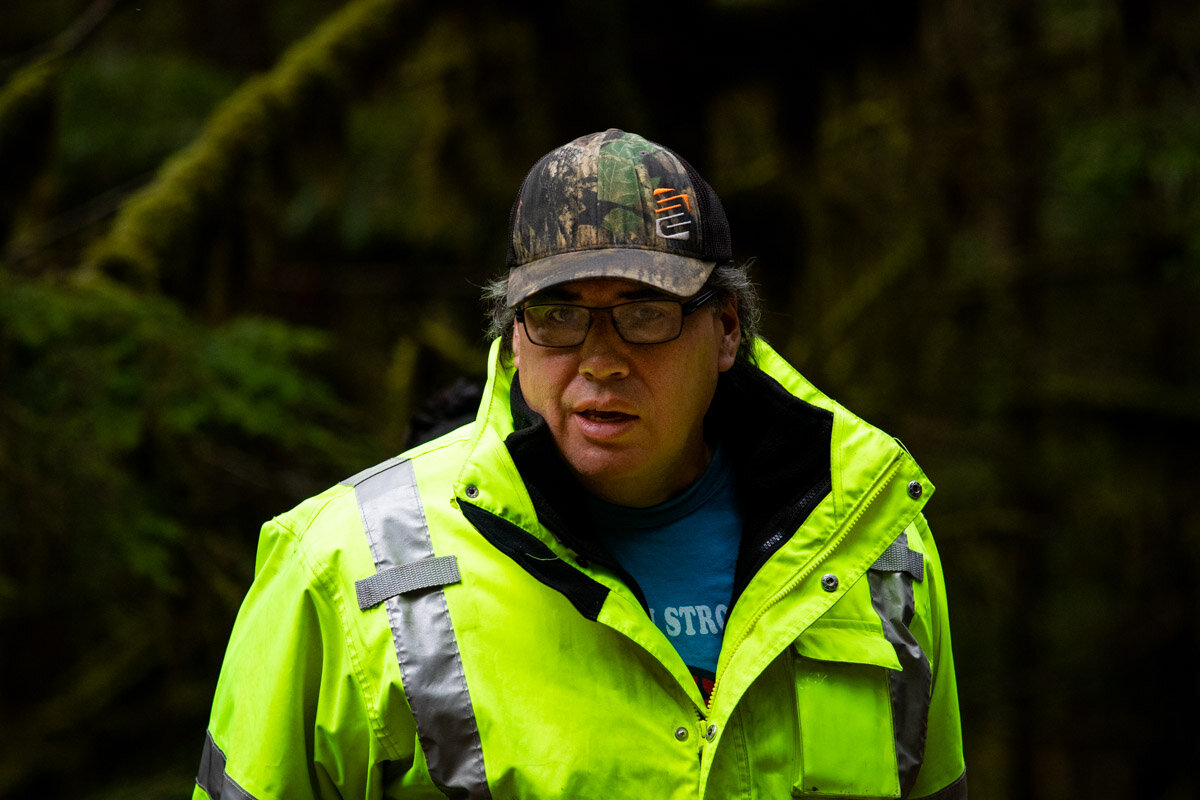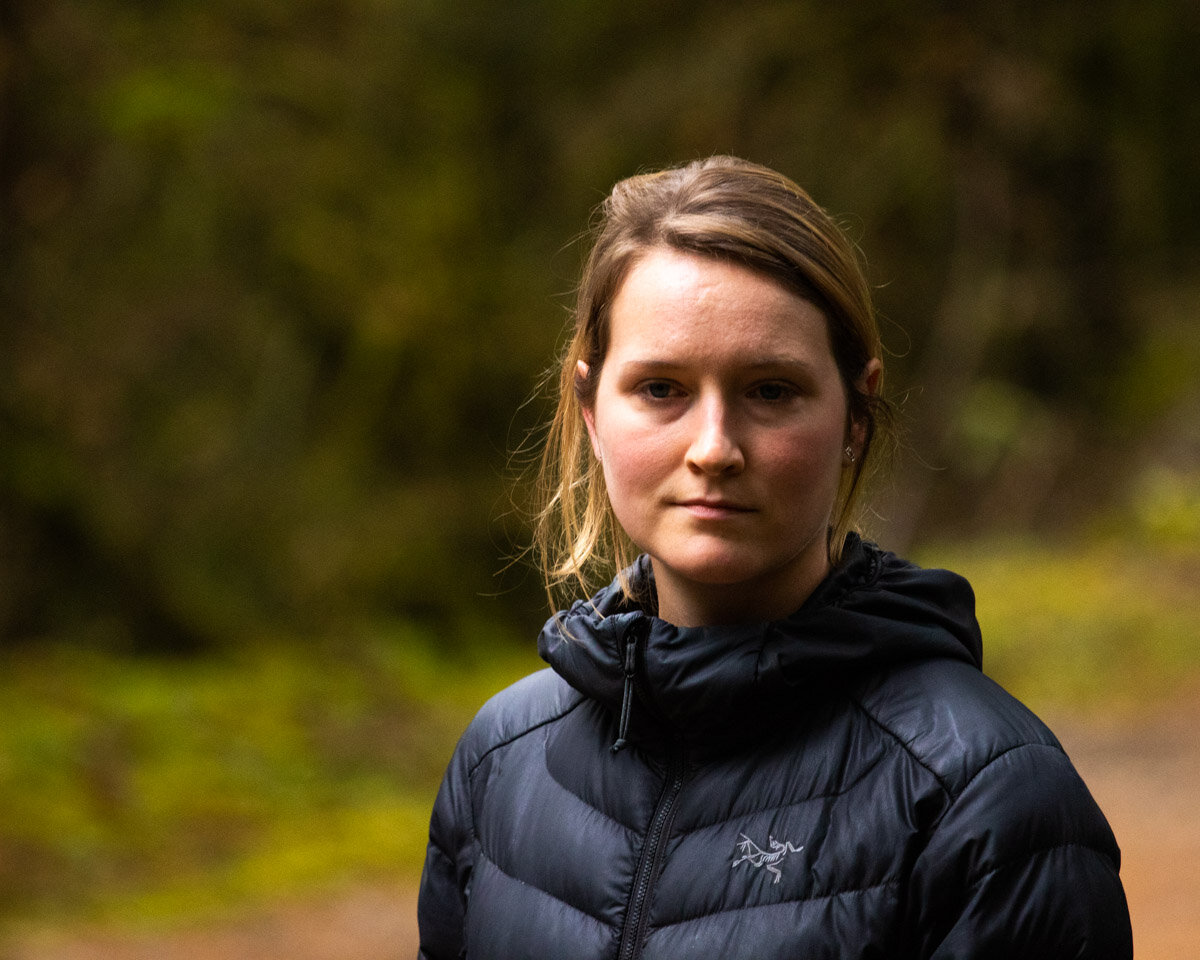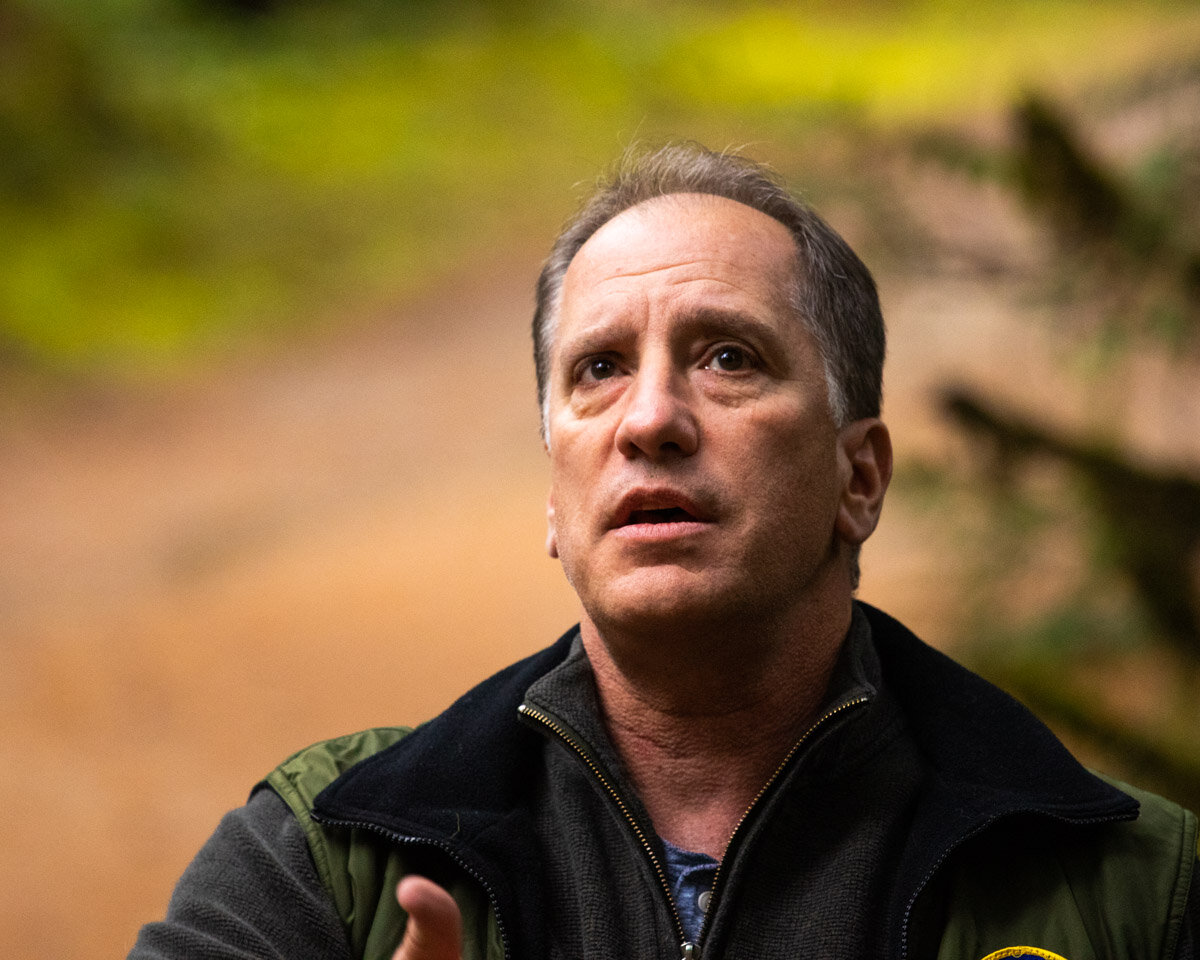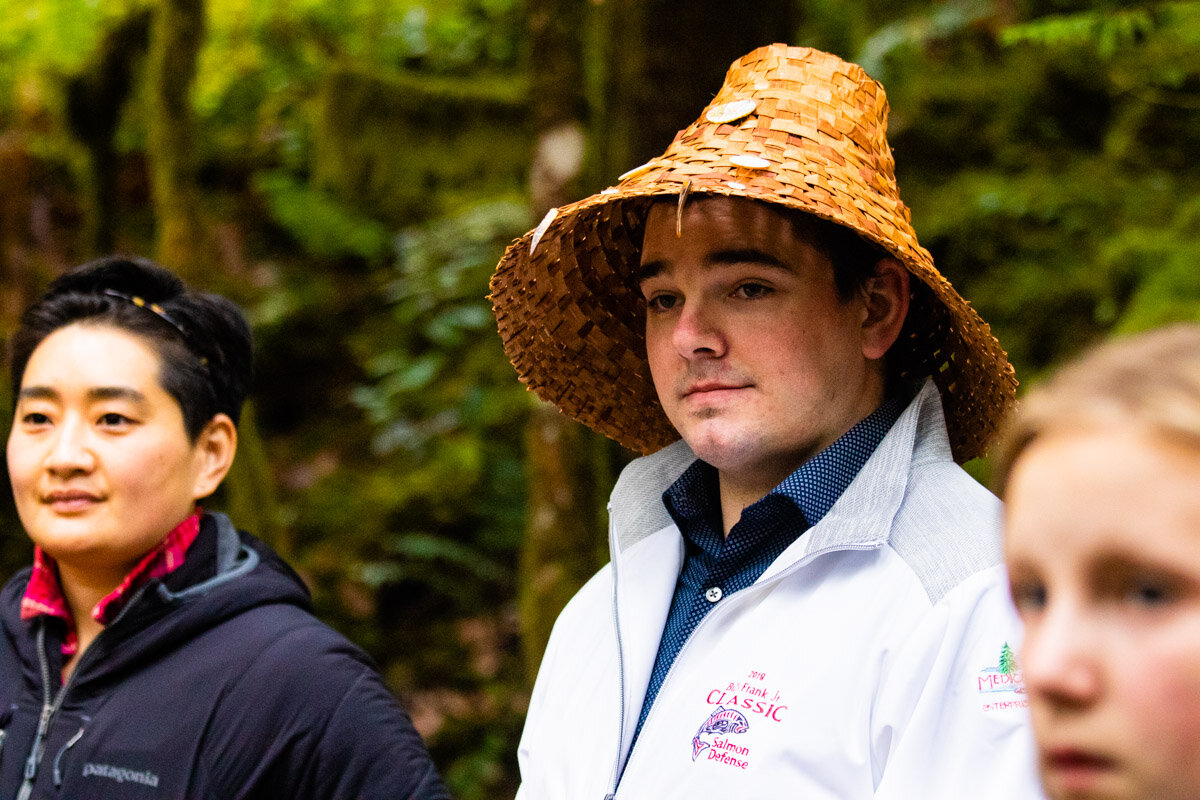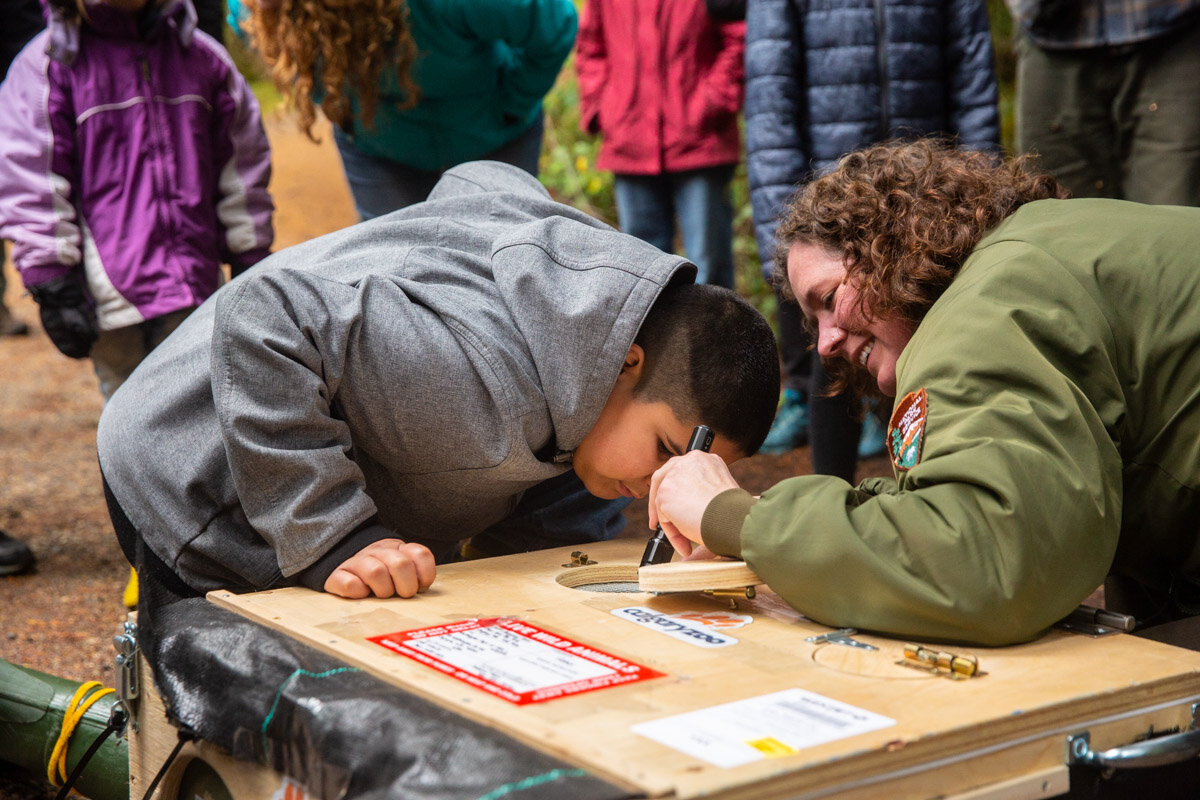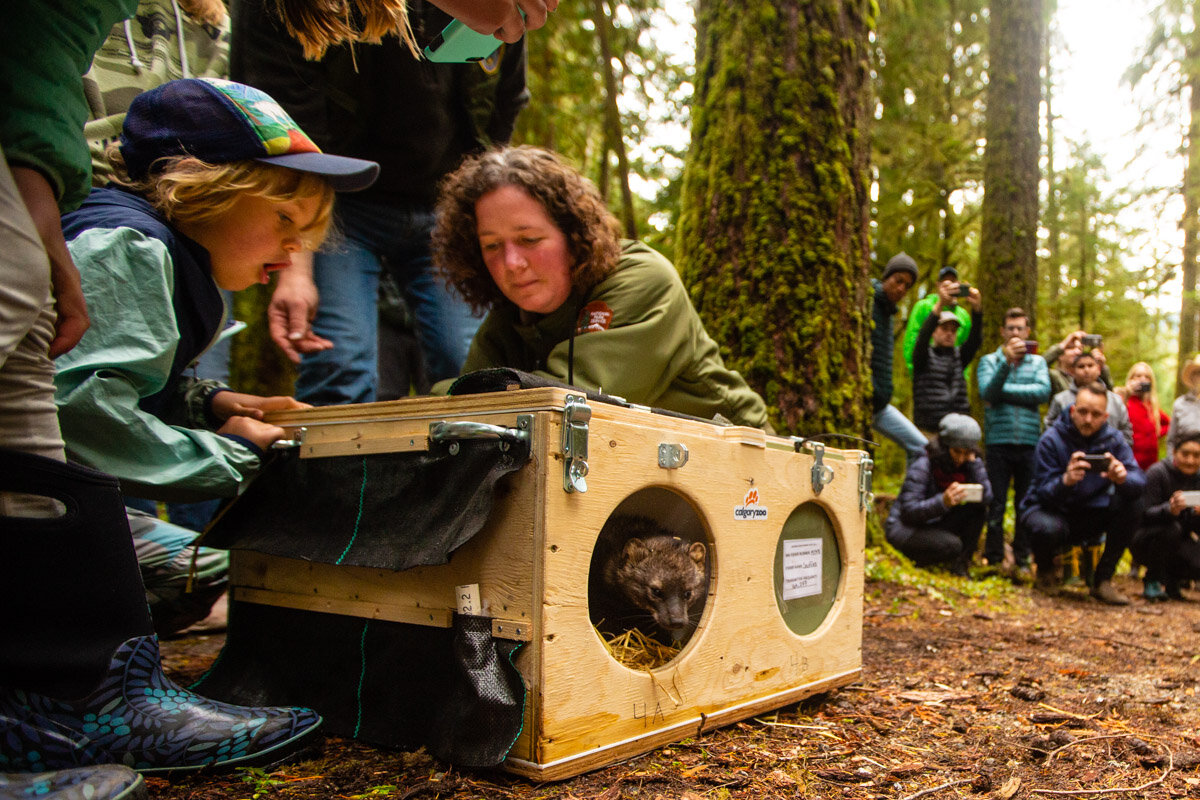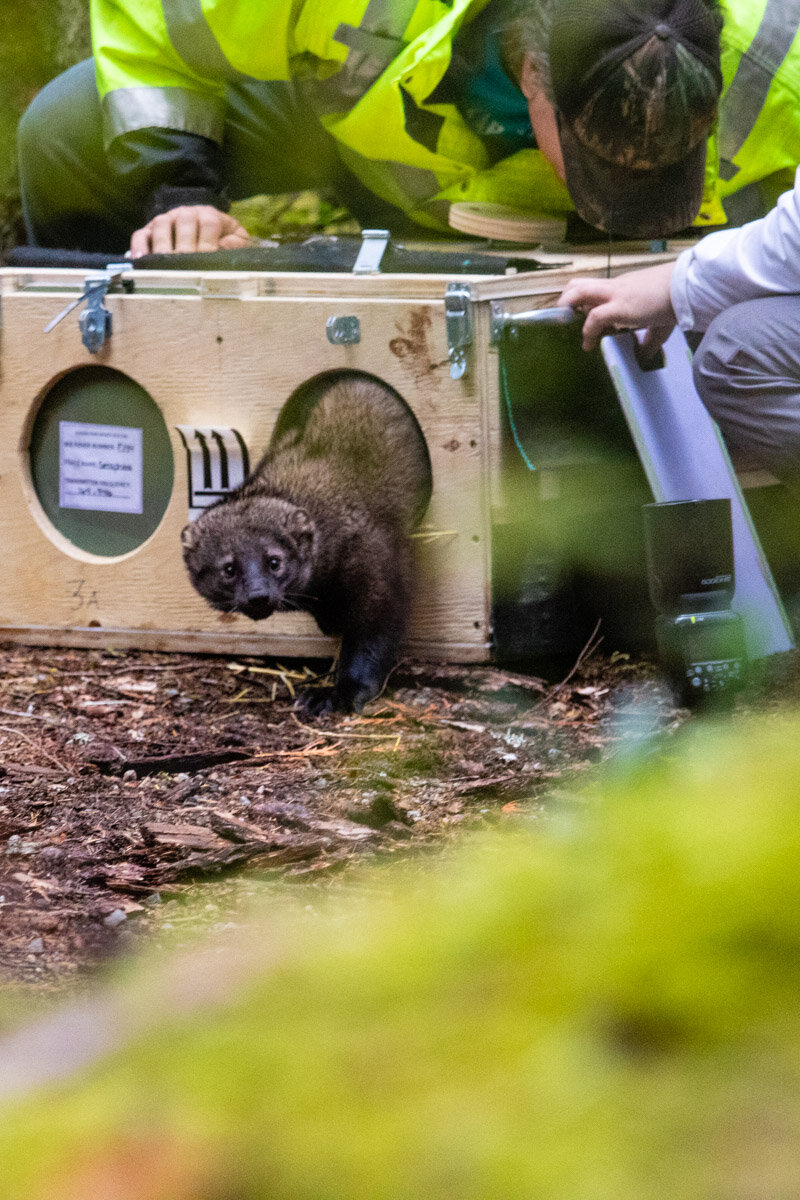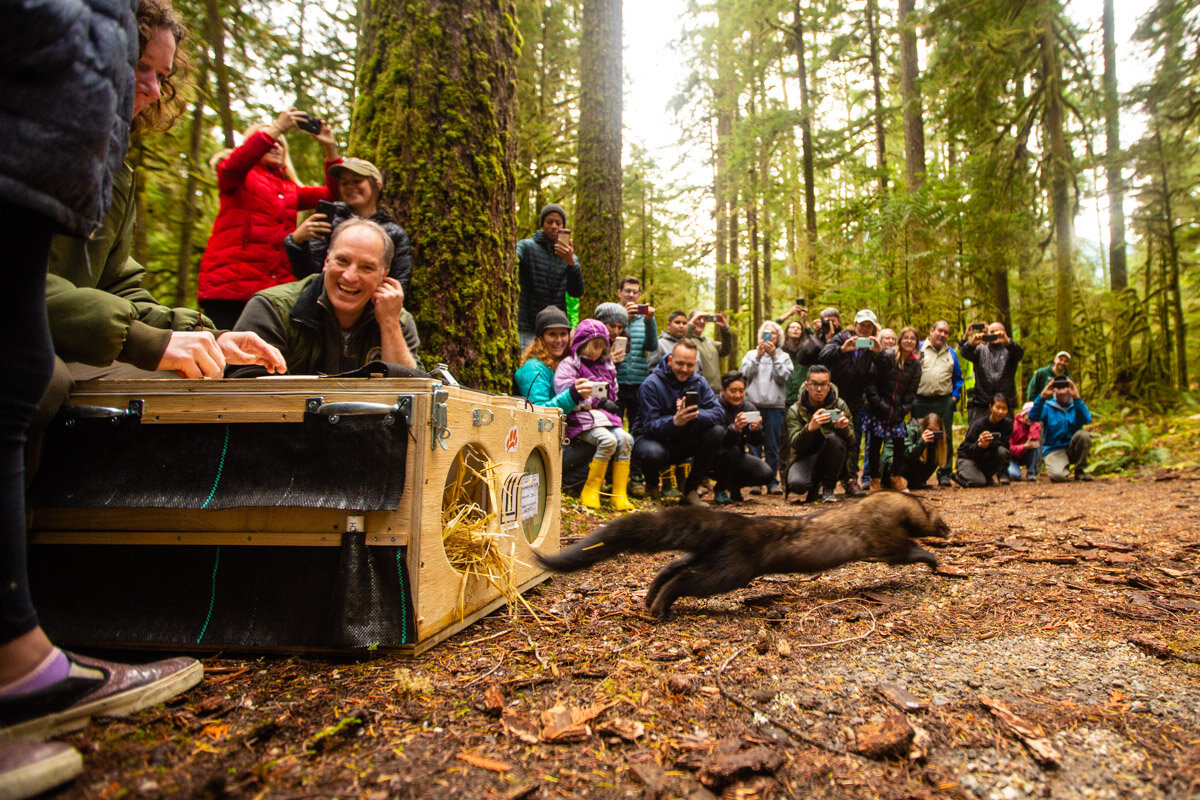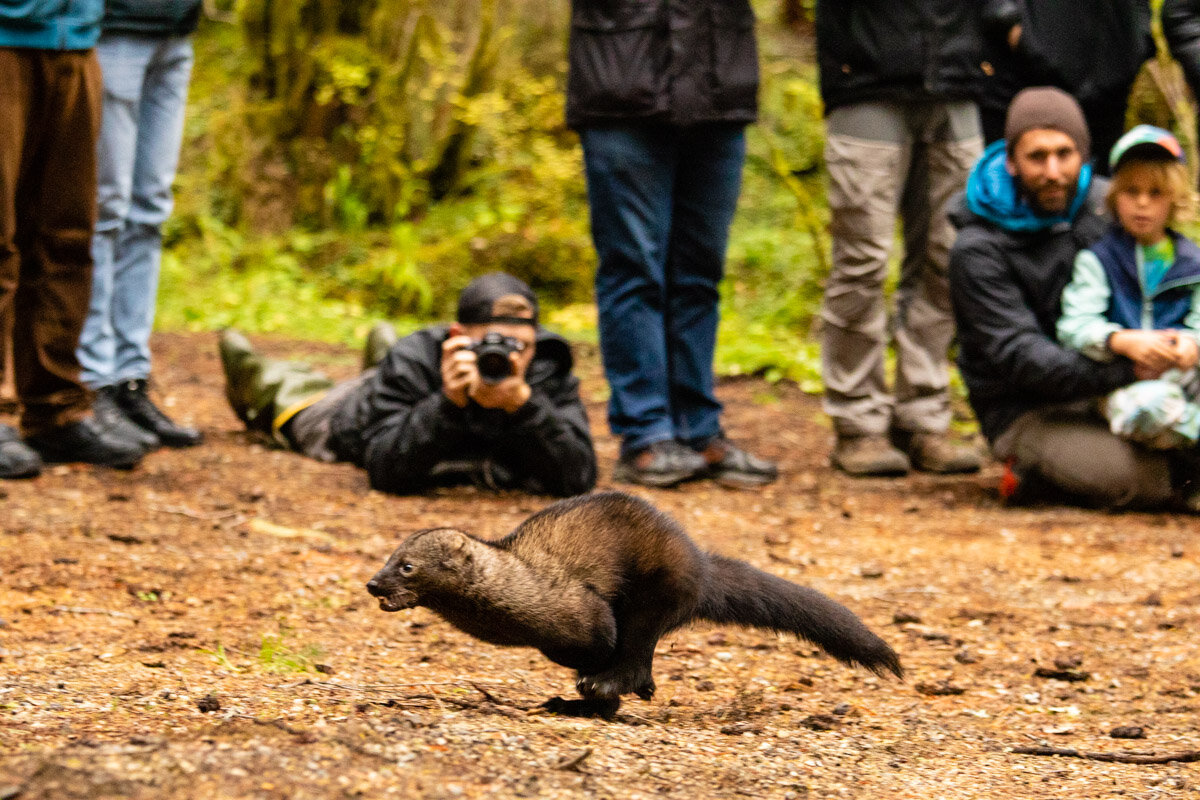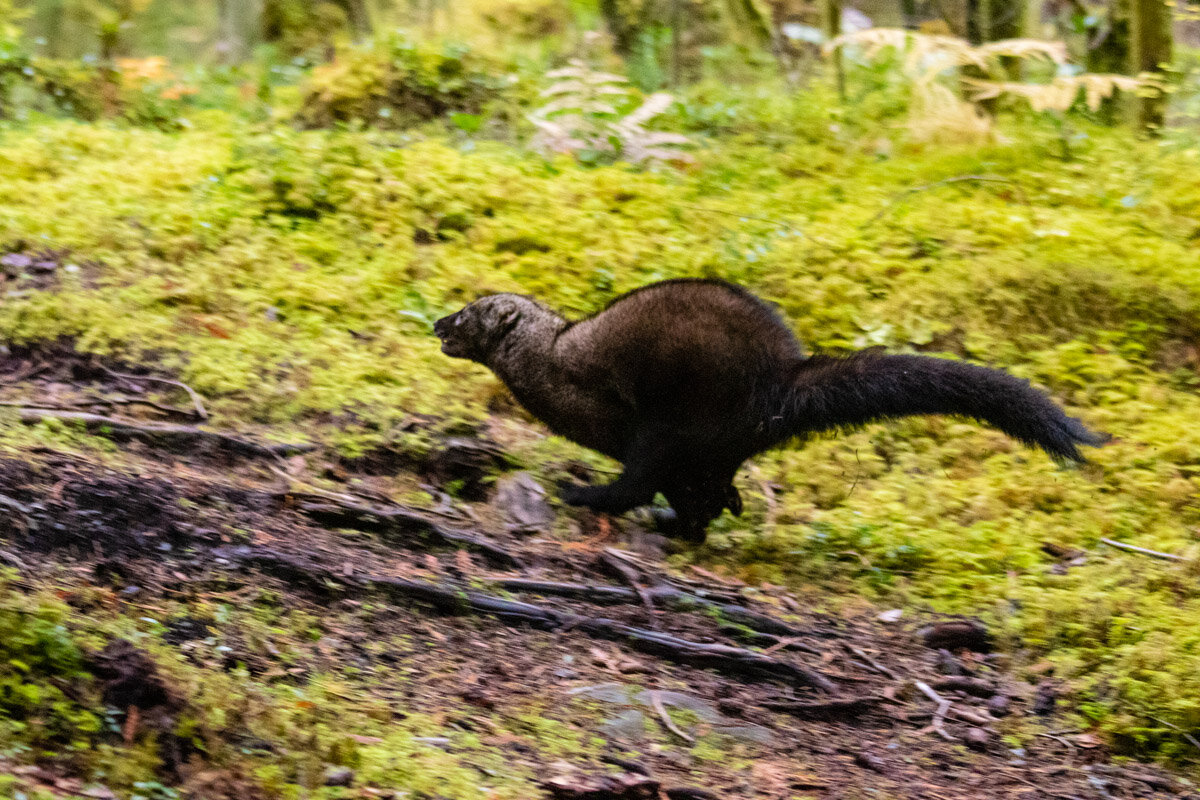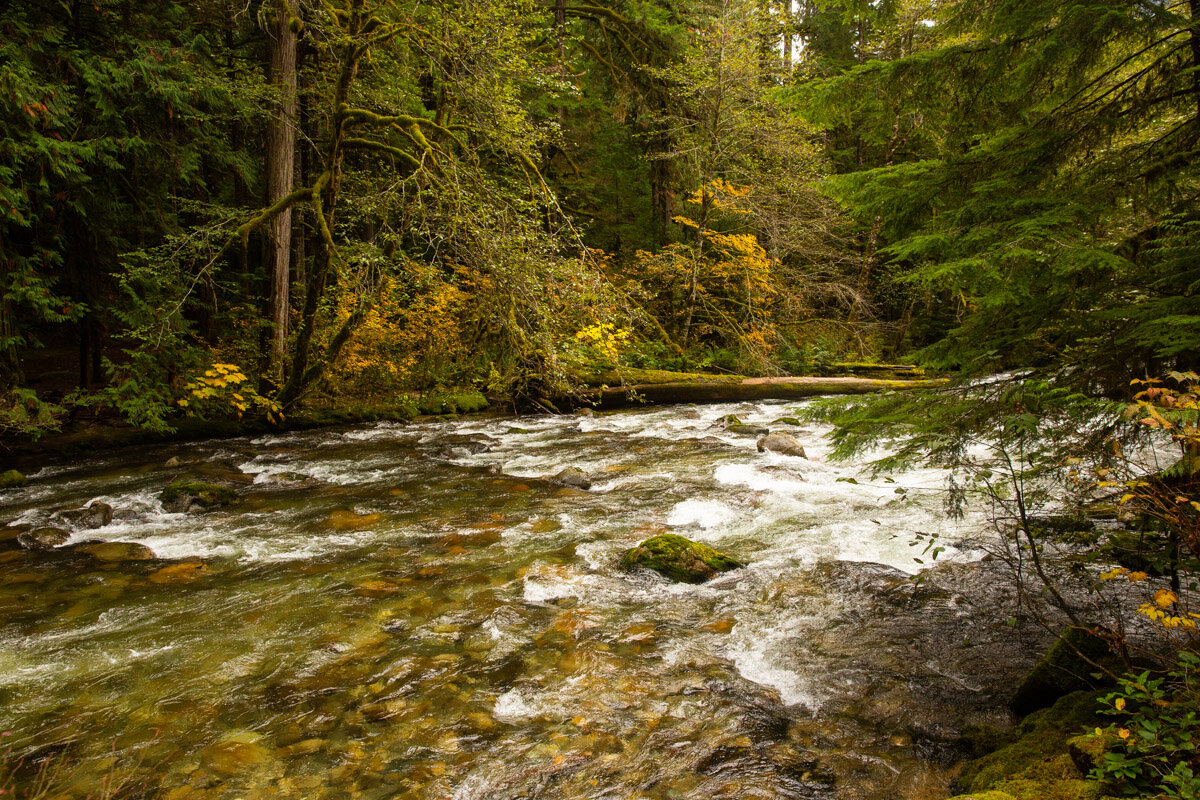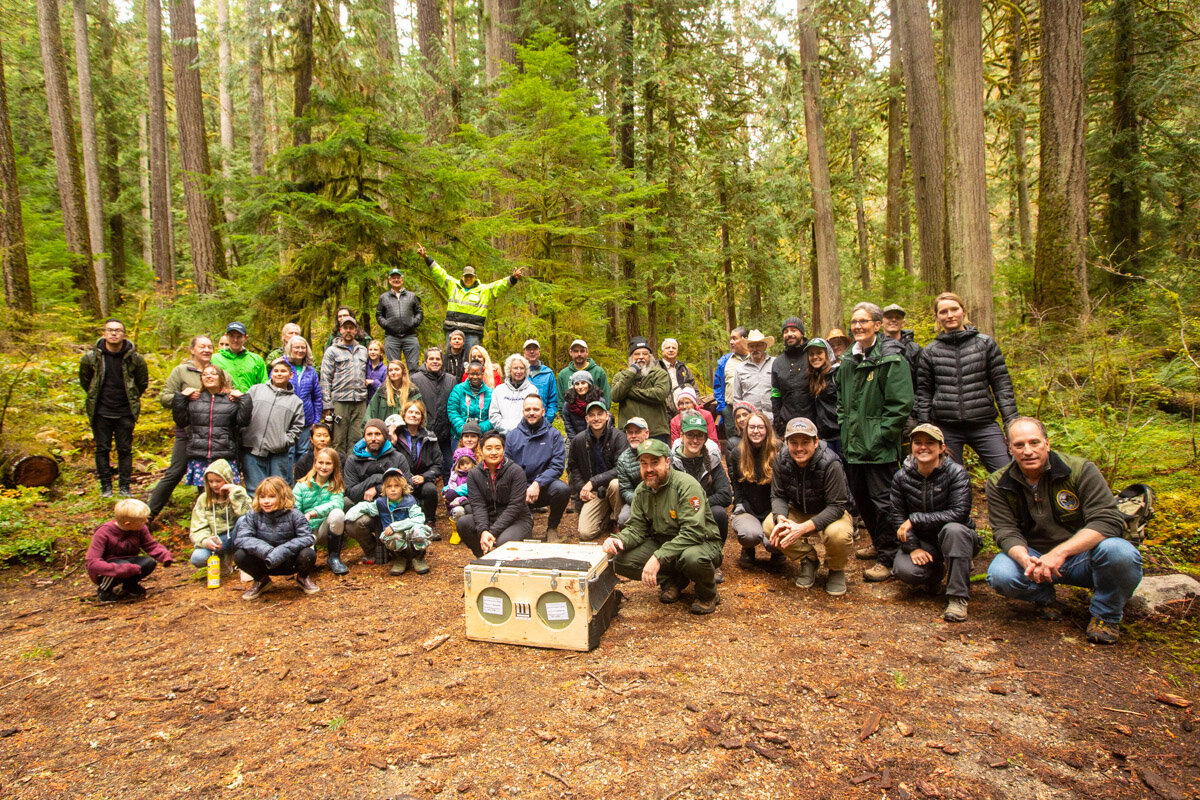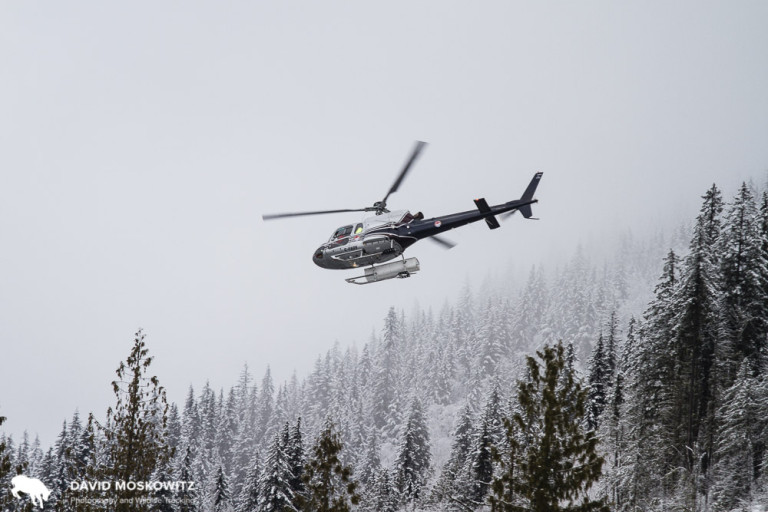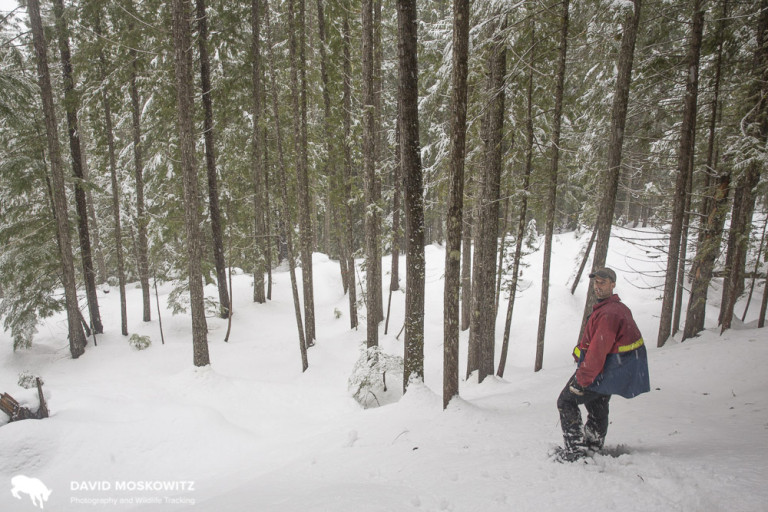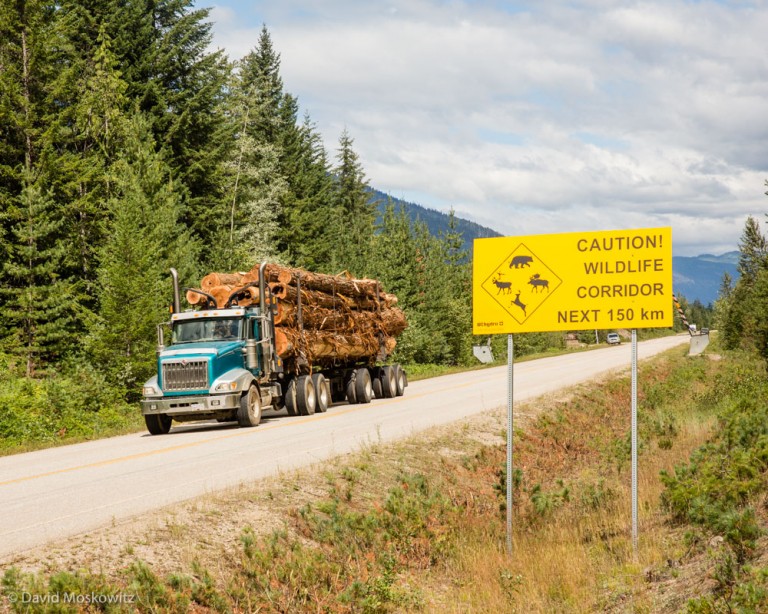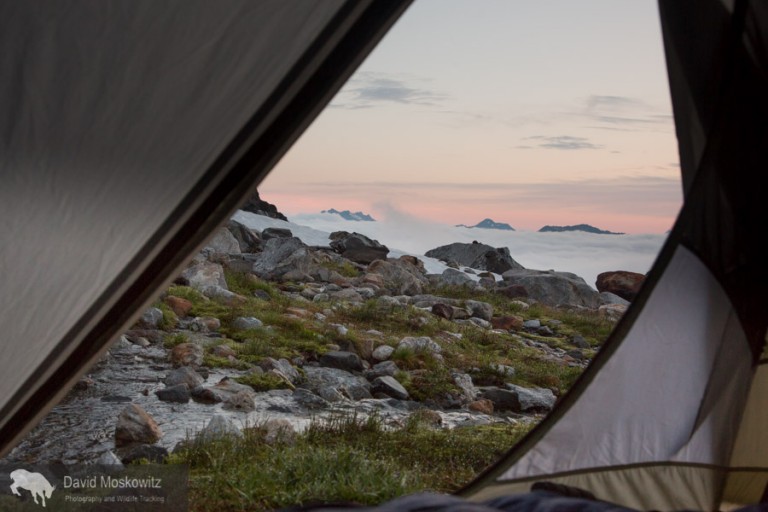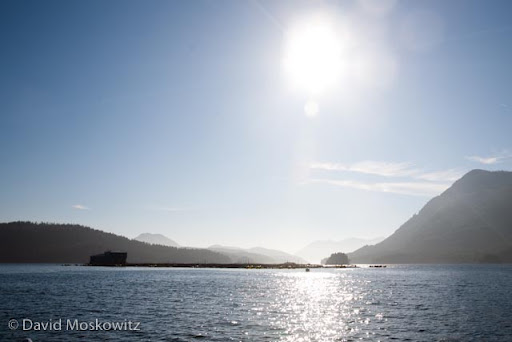Wild salmon, fish farms, and First Nations in British Columbia
(Un)Clearcut
(Un)Clearcut
In British Columbia a complex forest management system leaves old growth vulnerable to logging.
My latest reporting (text and photography) from the Caribou Rainforest just published in Earth Island Journal. The piece explores how the provinces Old Growth Management Areas have failed to protect old growth across the province due in large part to loopholes in the legislation and a complete lack of government oversight of the forest industry.
Fishers return to the North Cascades
A partnership between tribes, multiple government agencies in the United States and Canada, and Conservation Northwest is bringing fishers back to the North Cascades. Fisher were extirpated from the region by fur trapping and poisoning campaigns in the 1900’s. On October 24, 2019, 8 fishers were released on the traditional territory of the Sauk-Suiattle Tribe on the west slope of the North Cascades close to the town of Darrington, Washington.
Loss and Love in the Caribou Rainforest
Note: On October 25th I had the opportunity to participate in Ampersand Live: An Evening of Storytelling About People and Place, sponsored by Forterra, a land conservancy in western Washington. I had the honor to share the stage with a number of amazing Northwestern artists. With only five minutes to share stories and show images about the Caribou Rainforest, I thought about what I could share that would connect people with this place and the story of its inhabitants….these are my remarks from the evening.
What is conservation? A View Into the Human Economy in the Heart of Mountain Caribou Country
What is conservation? A View Into the Human Economy in the Heart of Mountain Caribou Country
Revelstoke is a small city in the heart of the Columbia Mountains, about an hour west of Rogers Pass on the Trans Canada Highway. During my recent stay in Revelstoke, British Columbia, the most thoughtful description of the economy was shared with me by Michael Copperthwaite, the General Manager of the Revelstoke Community Forest Corporation. He described it as a resource extraction town with a veneer of ecotourism. A few days in town will confirm that both of these industries have a strong presence in the community. You can watch log trucks, loaded with old growth cedar, roll by to the mill on the south end of town, while stop by one of several excellent coffee shops before your hike, climb, ski, or mountain bike ride. Your helicopter flight to a day of heli-skiing might take you over the hydropower dam on the Columbia River, 5 minutes outside of town. Your day of lift access skiing at the local resort will provide you outstanding views of mountainsides oddly decorated with a patchwork of clearcuts, spreading out in every direction around town. There are two national parks right outside of town, one of which is bisected by the Trans Canada Highway, Canada's most important ground transportation route.
Every inch of this landscape is traditional habitat for mountain caribou. Revelstoke is in the heart of inland temperate rainforest and, as any visitor will tell you, is very, very wet. Caribou here exhibit the double migration pattern typical of the 'mountain' ecotype: spending a chunk of the spring and fall in the valley bottoms, and the summer and winter at high elevations. The two caribou herds in the region are fairing quite differently. The Columbia South herd is heading quickly towards extirpation, with the province listing only 5 animals and having no plans to augment the herd. The Columbia North herd has been the focus of a great deal of attention, and by most estimates its size has “stabilized” with well over 100 animals. The general consensus is that its prospects are better than most.
During 2 weeks in town this winter, I interviewed and/or spent time in the field with folks working in the local timber economy, members of the local Revelstoke Snowmobile Club, and several folks involved in the heli-ski industry. I also met with the Board of Directors for the non-profit Revelstoke Caribou Rearing in the Wild project which is spearheading the experimental program north of Revelstoke to hold pregnant caribou in pens for the period before and after they give birth to protect the cows and calves from predators during the calving season. This project has received the wide support of just about every element of the local community and has served as an opportunity for collaboration and relationship building between various segments of the community who are traditionally at odds with each other.
Daniel Kellie (left), owner of Great Canadian Snowmobile Tours and president of the Revelstoke Snowmobile Club, and club members Ron LaRoy (center), and Brad McStay lean on the front of one of the clubs groomers used to maintain the network of snowmobile trails the club manages all winter. Daniel noted that interest in snowmobiling in the Revelstoke area is growing, adding pressure to the areas currently easily accessible and legally open to to snowmobiling, a number of which have known mountain caribou populations.
Kevin Bollefer, the operations forester for the Revelstoke Community Forest Corporation snowshoeing through one of the stands the corporation has recently harvested in. Kevin and the Community Forest are working on ways to carry out economically viable timber harvest which minimize impacts on caribou. He explained that this is easier to do in locations with high value timber. Locations where the value of the trees is less means that clearcuts are often the only viable option for logging, a result of a combination of market forces and British Columbia’s forest management regime.
Another point that everyone agrees on is that the economy of this community is intimately tied to the natural resources that surround it, from the power of the Columbia River to the deep powder of the numerous mountain ranges. And everyone also understands that, economically, while things are well now, there are problems on the horizon that will need to be reckoned with. As Ian Tomm, Executive Director of the Heli-Cat Canada Association put it, in regards to the heli-ski industry specifically, “Everyone in this industry is pro-conservation. The trouble is in the details of what is conservation.” What is conservation? Each interest group I met with had their own ideas about the problems and potential solutions. Caribou conservation efforts have changed business as usual for everyone in this community, and for the most part everyone is looking forward and attempting to find ways to pro-actively adapt to the changing ecological and business climate.
Over the months to come myself and my collaborators will be returning to the area to collect more material for this story, and to learn more about the ecological interactions between mountains, rainforest, caribou, and humans in this stunning and confusing corner of mountain caribou country.
MCP: Of Caribou and Foolish Apes
Guest blog post by Marcus Reynerson; photography by David MoskowitzMarcus Reynerson joined me for a week and a half on the Mountain Caribou Project in the Columbia mountains and Rocky mountains last month. Here are a the first of his reflections from our time in the field.--DM
The end of 88 km of logging roads in the Columbia Mountains. A recent rainforest clearcut.
Humans. Sometimes I find myself so unimpressed. After driving kilometer upon kilometer of BC logging roads though a clear-cut landscape, parts of which were old-growth inland temperate rainforest just 5 years ago, I could not escape my disappointment with Homo sapiens. It boggles my mind to think about how often we accept and value short-term gains at the cost of our long-term future. At the cost of our health, our children’s health, and the health of the planet that gives us life. The more blunt thought that pervaded my travels: “We are just a bunch of dumb apes.”
Marcus Reynerson inspecting a caribou antler he discovered in the old growth forest just uphill from the end of the road and the last clearcut in the valley.
Dave and I were on the trail to find sign – and eventually a live sighting hopefully – of the elusive mountain caribou. Dave was in the field for almost three weeks when I joined him in the Columbia mountains of southern British Columbia. Mountain caribou have developed a survival strategy that is based on being extremely hardy. Basically, they’ve adapted to thrive in environments that are marginal at best for other similar species. Unfortunately, Humans have heavily encroached upon an already hard-pressed landscape. Places ideal for these caribou to call home are dwindling at a precipitous rate. Climate change is taking a strong toll. As the temperature warms, plant communities and ecology are rapidly changing. In some places, the moist cool sub-alpine meadows that have historically supported caribou are disappearing as they become more forested. Overharvesting of timber is creating habitat amenable to deer, elk and moose, which bring predators that are following these ungulates into closer contact with caribou.
Log truck carrying old-growth cedar trees out of caribou country.
It was an incredible tension that I felt cruising the logging roads of British Columbia. For some reason, the province is still harvesting old-growth trees. I found myself incredulous that this was happening still in 2015. The valleys where caribou call home are so beautiful, while at the same time so sad and tragic. Such beauty and devastation all in one place, as far as the eye could see. I’m excited to dig deeper into this story. And I’m also nervous. While it’s a story about the Mountain caribou, it’s also a story about humans. I’m so impressed with the former. At this point I can’t say the same about the latter. More thoughts to come...
When Marcus Reynerson isn't waxing philosophical on the role of humans and caribou in the world, he is the coordinator of the Anake Outdoors School at Wilderness Awareness School in Duvall Washington.
Click here to learn more about the Mountain Caribou Project.
Trees at the edge of a clearcut. Upper Seymour River valley, British Columbia.
MCP: Logging in Mountain Caribou Habitat
A log truck carrying western red cedar logs out of the home range of the Columbia North Caribou herd, past a sign warning motorists to watch out for wildlife on the road.
The timber industry has been the backbone of the economy in most of the interior of British Columbia for several generations. Industrial scale logging is also the primary source of the majority of challenges facing Mountain caribou. Because of this, sorting out how to protect caribou habitat while at the same time dealing with the demands of the very powerful timber industry (and modern civilization for that matter) for lumber has been an especially challenging task in attempts to conserve and restore caribou populations.
How well this has been done varies in different locations around the province. A few thing are clear. Mountain caribou depend on low and middle elevation old growth forests for early winter habitat, and high elevation old growth for winter habitat. Clearcuts and early stages of forest regeneration are prime habitat for moose and deer which attract attention from wolves and mountain lions who then prey on caribou more often in landscapes with a large logging footprint in them. Logging roads become access routes for humans on snowmobile in the winter to areas that are sensitive for caribou who are easily displaced by human recreation activities in the winter. A large amount of habitat has been set aside for mountain caribou which has curtailed logging in some areas and road use restrictions have been put in place as well. However, logging of both old growth and second growth forests continue in mountain caribou habitat in some places.
Lumber yard in Revelstoke, British Columbia. The logging industry is a primary employer in much of the region.
Mill worker on his way to work at the lumber mill in Revelstoke, British Columbia, a town where both timber and tourism are major and at times competing components of the economy. Mountain caribou conservation has put stresses on both in terms of restrictions on logging as well as the heliski and snowmobile recreation which are big business in the area.
British Columbia is the last place in the Pacific Northwest with significant stands of old growth forest still slatted for logging, both on the coast and in the interior. Conservation groups have used caribou protection as a tool to curtail logging in these ancient forests, much the spotted owl was used in the United States several decades ago—imperfectly in both cases. With caribou populations continueing to decline in much of their range logging interests have started looking at having these restrictions lifted once the caribou disappear from an area while conservation groups are looking at what might be the next lever for protecting whats left of this unique inland temperate rainforest.
A recently logged second growth forest in the Seymour River watershed. Industrial scale logging which employs large machinery to cut and remove logs often leaves a devastated appearing landscape behind, including lots of wood cut and left on the ground, to expensive to transport out for the value of what can be made from it.
The likely destination of the logs cut in the landscape above. Stacked lumber with floating logs beyond them close to Salmon Arm, British Columbia
Kim Shelton takes in the grandeur of a remnant stand of old growth western red cedar close to Trout Lake British Columbia. How we as a society place value on forests and trees such as these is highly varied. Whether places such as this, and the animals such as mountain caribou whom depend on them, will continue to exist in any significant quantity for future generations to argue about seems tenuous at the moment.
Trailing Black Bears in the North Cascades
This spring I spent a week out in the field with several colleagues from Cybertracker Conservation honing our tracking and trailing skills following the trails of black bears on the western slope of the North Cascades. I put together a brief video describing the art of trailing and documenting some of what we discovered on our adventures in the temperate rainforest.
Interested in learning to trail bears and other wildlife? I offer custom classes in a wide variety of tracking subjects, including wildlife trailing.
Mountaineering, Glaciers and Climate Change in the North Cascades
Darcy Ottey on the approach to the Colonial Glacier cirque. Colonial Creek falls off to the left with Colonial Peak above it.
In August, Darcy Ottey and I went to explore a corner of the North Cascades we had never been to: the high peaks and glaciers just above the the south end Diablo reservoir, off of the North Cascades Scenic Highway in northern Washington State. After years of seeing Colonial Peak from the Highway when driving through, we picked what turned out to be a stormy summer week to venture into the area.
An arduous approach
Hours of grinding up a steep but established climbers route through lower and mid elevation forests eventually popped us out above treeline on glacier carved slabs along a ridgeline leading towards Pyramid Peak. From hear a short traverse across talus and old avalanche debris got us to the entrance to a glaciated citadel of mountains—the upper Colonial Creek cirque.
Camp on the edge of the recently formed lake at the terminous of the Colonial glacier.
A blanket of clouds cover lower elevations in the North Cascades with high peaks sitting like islands in the sea at sunrise. The image is similar to how these mountains often appeared during the ice age when glaciers often covered lower elevations in much the same way.
A dynamic landscape
Not surprisingly, when we reached where the map noted the snout of the Colonial glacier should be we found no ice. The glacier, like most glaciers in the North Cascades (and indeed across the planet), has receded significantly. Nearly a quarter mile up stream we found the new terminus of the glacier, where it ends in a newly exposed lake, in a depression carved out by the glacier and now filled with melt water and icebergs—detached chunks of the crumbling glacier. Thunderstorms roiled a we elected to avoid campsites on the exposed rock prow above the lake, instead choosing to set up camp on the only flat spot we could find adjacent to the lake.
Receeding glaciers leave behind moonscapes of scoured bedrock covered with piles of rubble and rock flour.
Glacial ice exposed at the very top of the Colonial glacier (upper left of this photo) suggests that this glacier no longer has an accumulation zone. Under current conditions, it is just a matter of time before the glacier disappears completeley–perhaps within the next several decades.
Current maps show glacial ice extending much further down then where the actual terminous of the glacier is now. The retreat of the glacier has created this newly formed lake. Chunks of glacial ice still float in the lake, demonstrating how quickly this landscape is changing due to shifts in the climate.
Glacial lakes such as this one are filled with large amounts of ground rock powder giving the water a dark milky green appearance.
Earth, sky and water merge with a heavy fog sitting over the snow and ice choked glacial lake.
Inclement weather dashed our plans for several peak climbs but did not deter us from venturing further south, over the Colonial glacier and onto the Neve glacier.
Inclement weather dashed our plans for several peak climbs but did not deter us from venturing further south, over the Colonial glacier and onto the Neve glacier.
The vast exapanse of one of the largest glaciers in the North Cascades, the Neve Glacier with Snowfield Peak sitting at its head, on the left side of the frame. Seen from the Neve-Colonial glaicer col.
On the broad expanse of the glacier, the peaks and landmarks disappear leaving an eerie world with land and sky blending together into a world of white.
Paul Bunyon’s Stump, Pinnicle, and Pyramid peaks from Colonial-Neve glacier col.
Looking north from the area into the upper Skagit river valley. Ross Lake, a large reservoir built to provide hydro-electric power for the city of Seattle is a more obvious sign of our species quest for energy then the retreating glaciers of the region but both reflect the long reach of modern human’s influence on even the most wild and rugged landscapes in the world.
Descending into the clouds from the glacial cirque back into the forests of the North Cascades.
Sections of forests on the western slope of the North Cascades get enough precipitation to qualify as temperate rainforest. Only 10,000 years ago these slopes likely appeared much like the higher elevations do now, having just been released from retreating glaicers which filled the mountains and flowed down into the ocean. Climate models predict these mountains to get warmer and wetter in the decades to come. Glaciers will retreat and forests will advance unslope in an ongoing advance of forests through these mountains which began millenia ago.
Bears, for a change of pace
Black Bear feeding on huckleberries. East of Heart Lake, Olympic National Park
A few images from a recent trip to the 7 Lakes Basin in Olympic National Park.
Black bear, Olympic National Park.
Black bear, Olympic National Park.
Darcy Ottey with the Hoh River Valley and Mt. Olympus in the background.
Darcy Ottey watching a bear feed in the meadow beyond her. An Olympic marmot was also watching the bear with much scrutiny. West of Swimming Bear Lake, Olympic National Park.
Western Heather Vole (Phenacomys intermedius). Lunch Lake, Olympic National Park.
Stream in the Sol Duc River Valley, Olympic National Park.
Black bear, feeding on huckleberries. Olympic National Park.
Clayoquot Sound, B.C.
Wolf tracks along west coast of Vancouver Island, British Columbia.
Bald eagle above a foggy forest.
Carcass of juvenile humpback whale on beach of island in Clayoquot Sound
Racoon foraging for sand flees on beach of island in Sound
Black-tailed deer feeding on seaweed on island in Clayoquot Sound.
River otter scent marking on seaweed as tide goes out.
Black bear foraging for invertebrates in the intertidal zone by rolling rocks.
Large Sitka spruce in ancient forest on island in the Sound.
A gray wolf trots along the beach early in the morning with ravens in the background. West Coast, Vancouver Island.
Tofino Inlet, Clayoquot Sound.
Harbor seals lounging at low tide.
Atlantic salmon fish farm in Clayoquot Sound with uncut forest in background. Several rivers with no clearcuts or roads in them are seeing massive declines in salmon numbers due to sea lice and other issues associated with fish farming in the Sound. The smell is overwhelming, far worse than a dairy farm and totally shocking in such a wild setting.
Active clearcut logging in Clayquot Sound. Top of the photo is uncut oldgrowth. Bottom is regrowth from a previous clearcut.
Growth rings: over 200. Destination: ?
Huge western red ceder stump set amidst second growth forest of planted Douglas firs. Note that the original nurse log that the ceder tree started growing on in still under the stump, attesting to the volume of biomass in the previous ancient forest and the literally centuries it took to create the structural diversity so important to many Old growth obligate species.
Despite decades of conservation efforts, Clayoquot Sound, a UNESCO Biosphere Reserve, faces numerous severe threats to its ecological integrity including clear cut logging of roadless old growth forests, industrial Atlantic salmon fish farms, and proposed open-pit copper mining. Learn more about the region and how you can support conservation in the region at the following websites:Friends of Clayoquot Sound Clayoquot Biosphere Reserve First Nations Environmental Network






